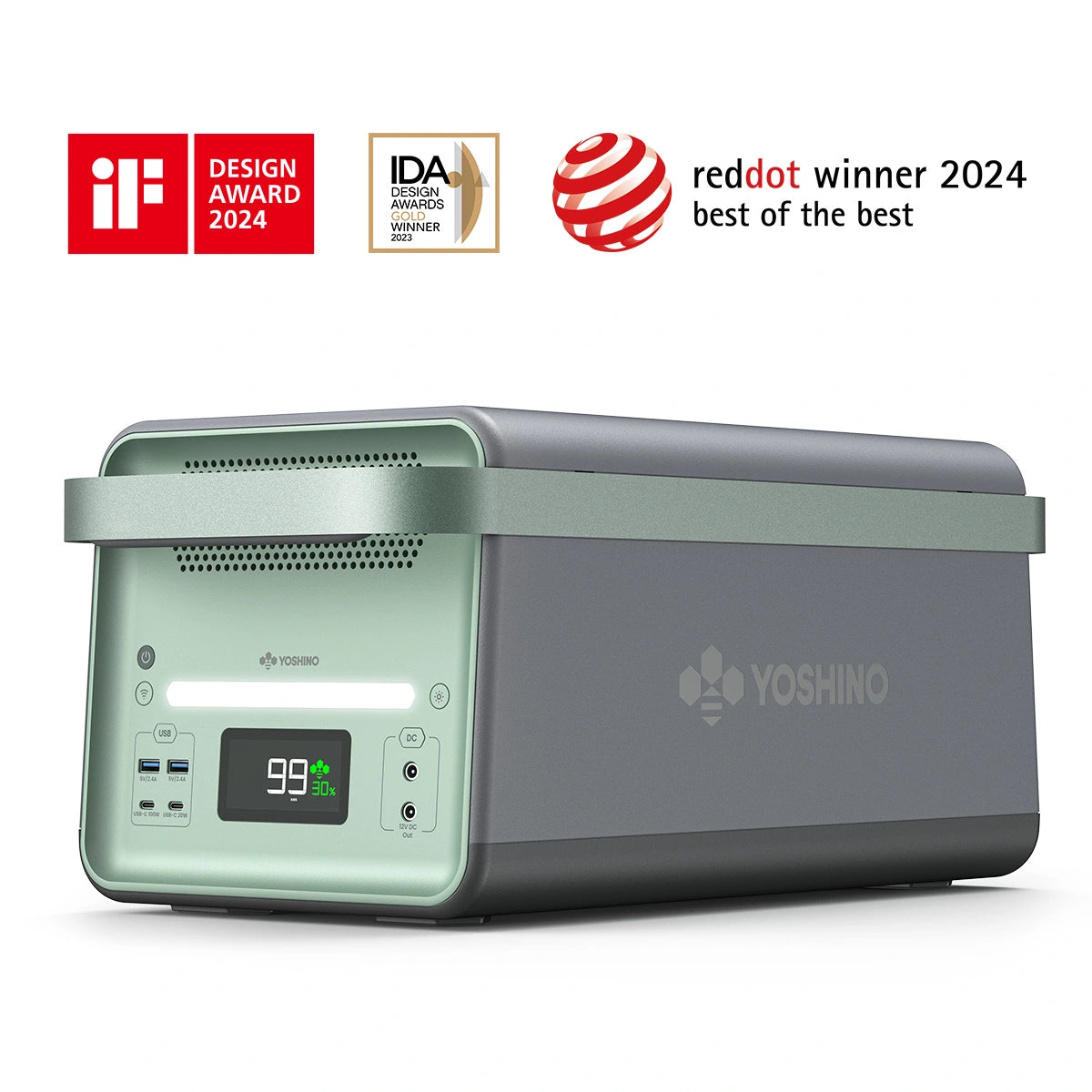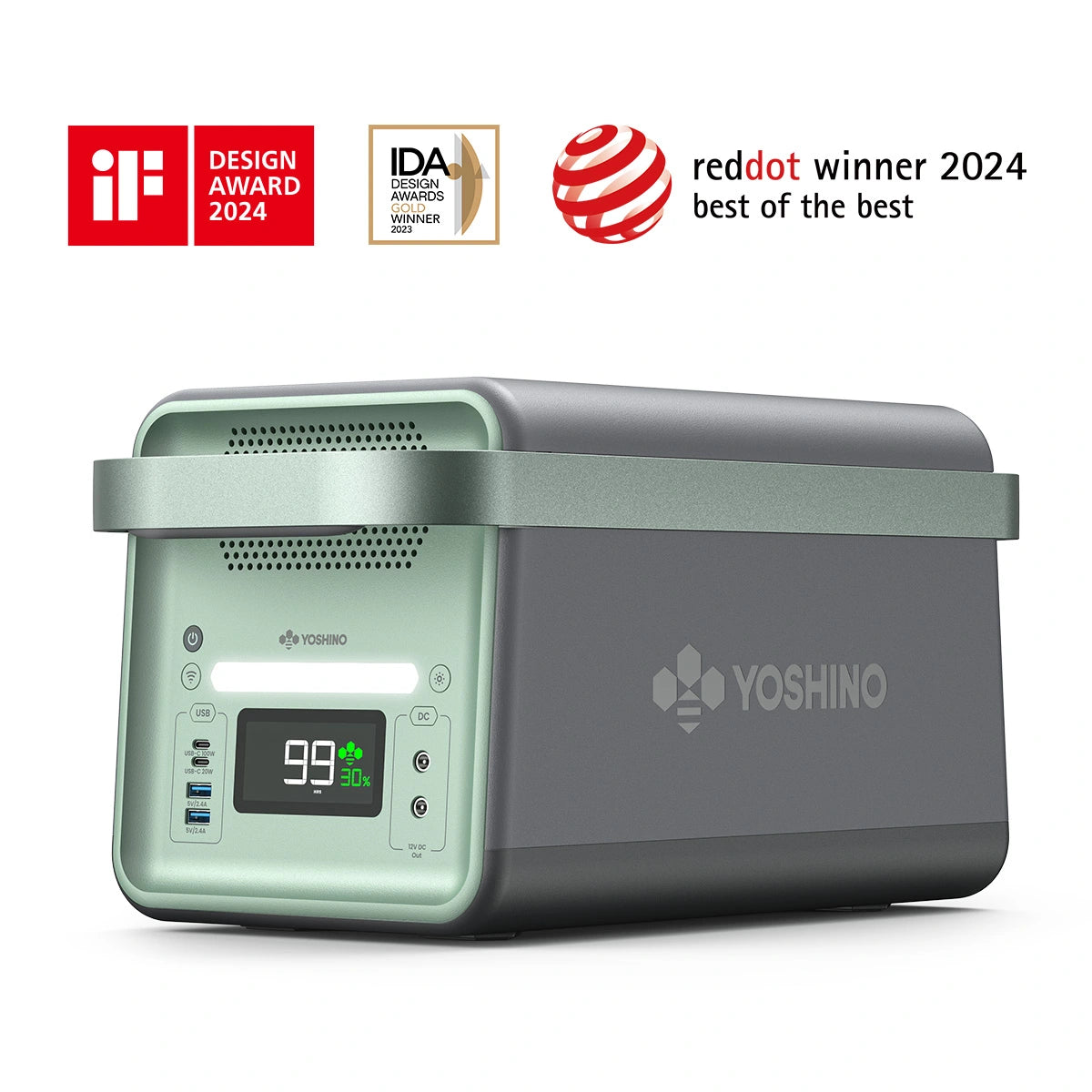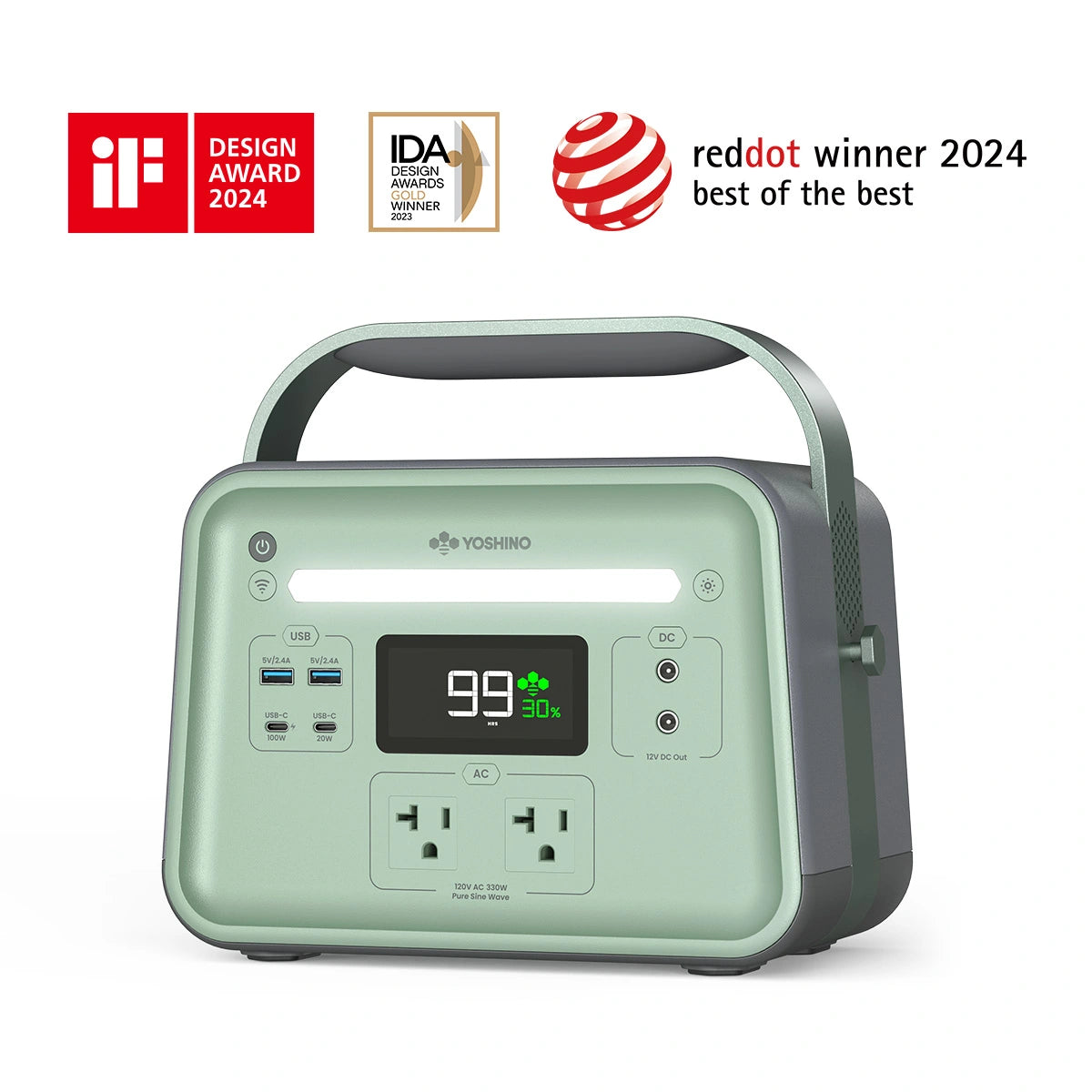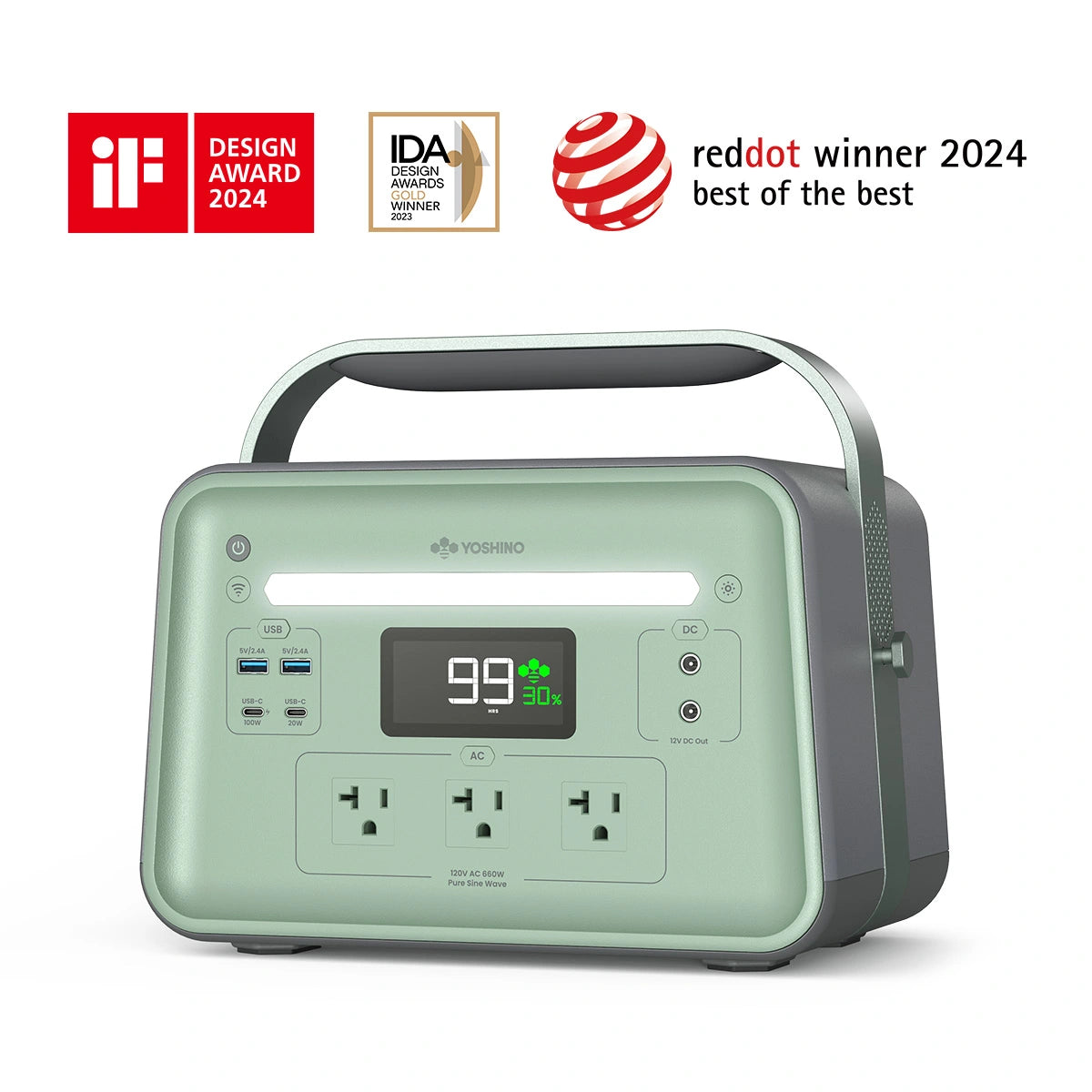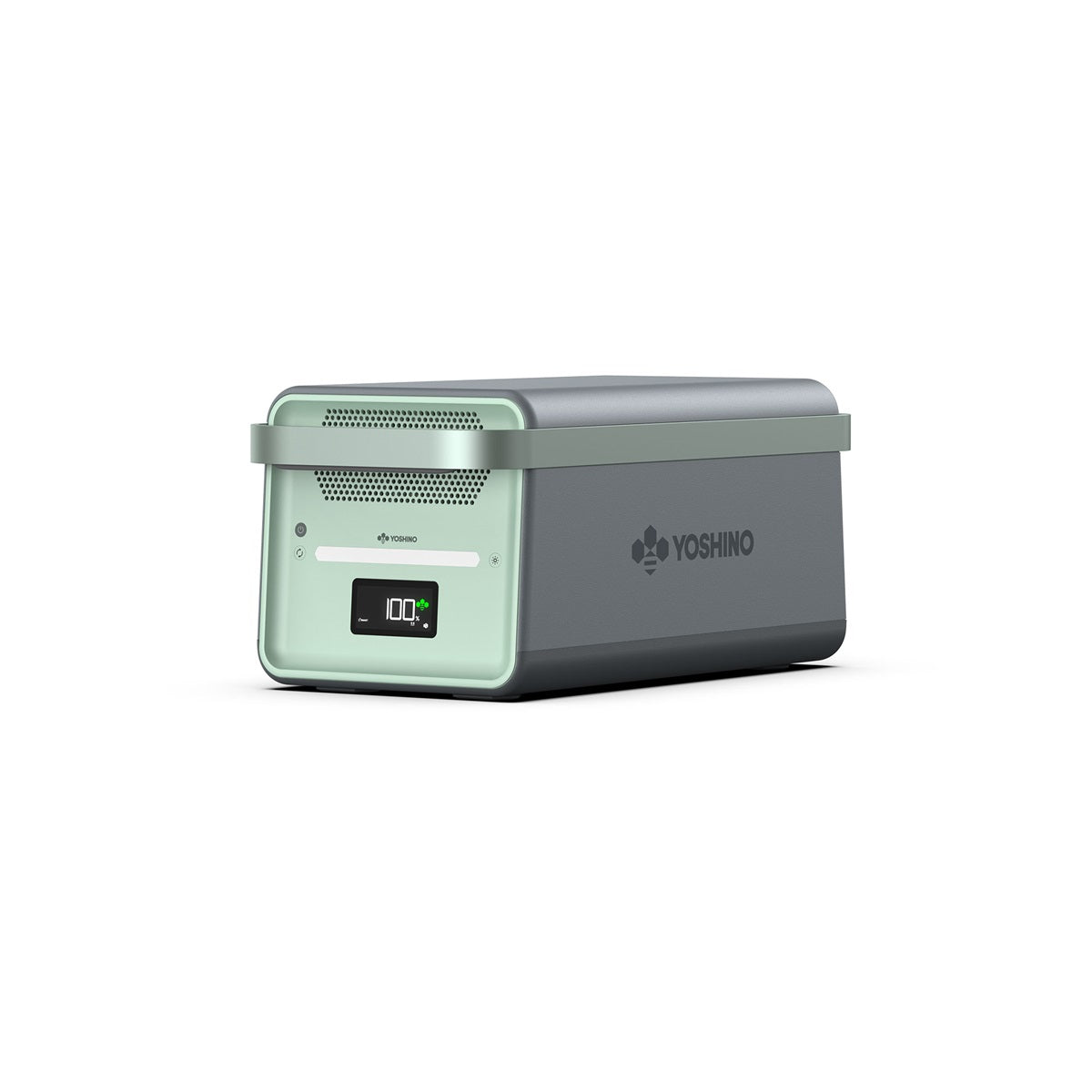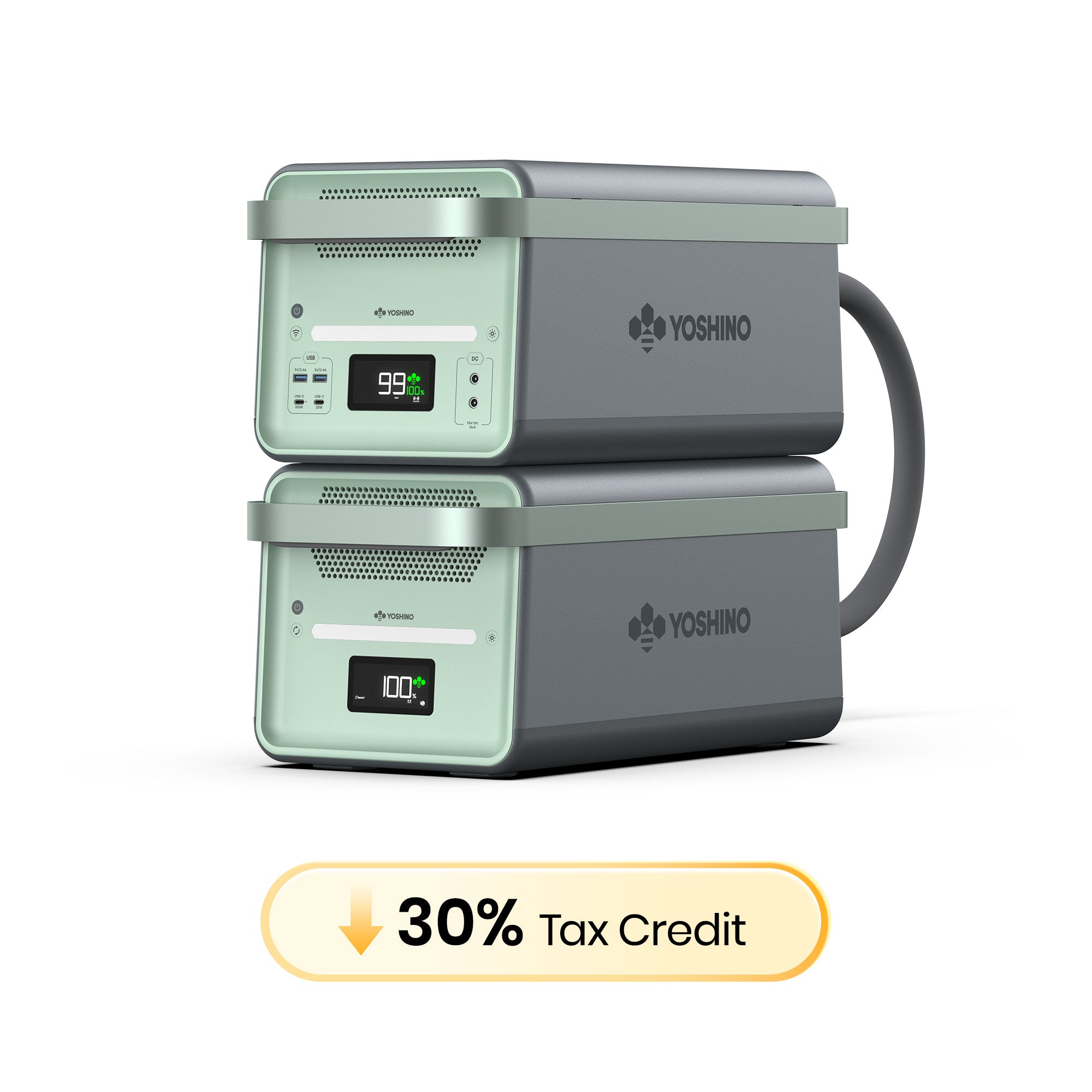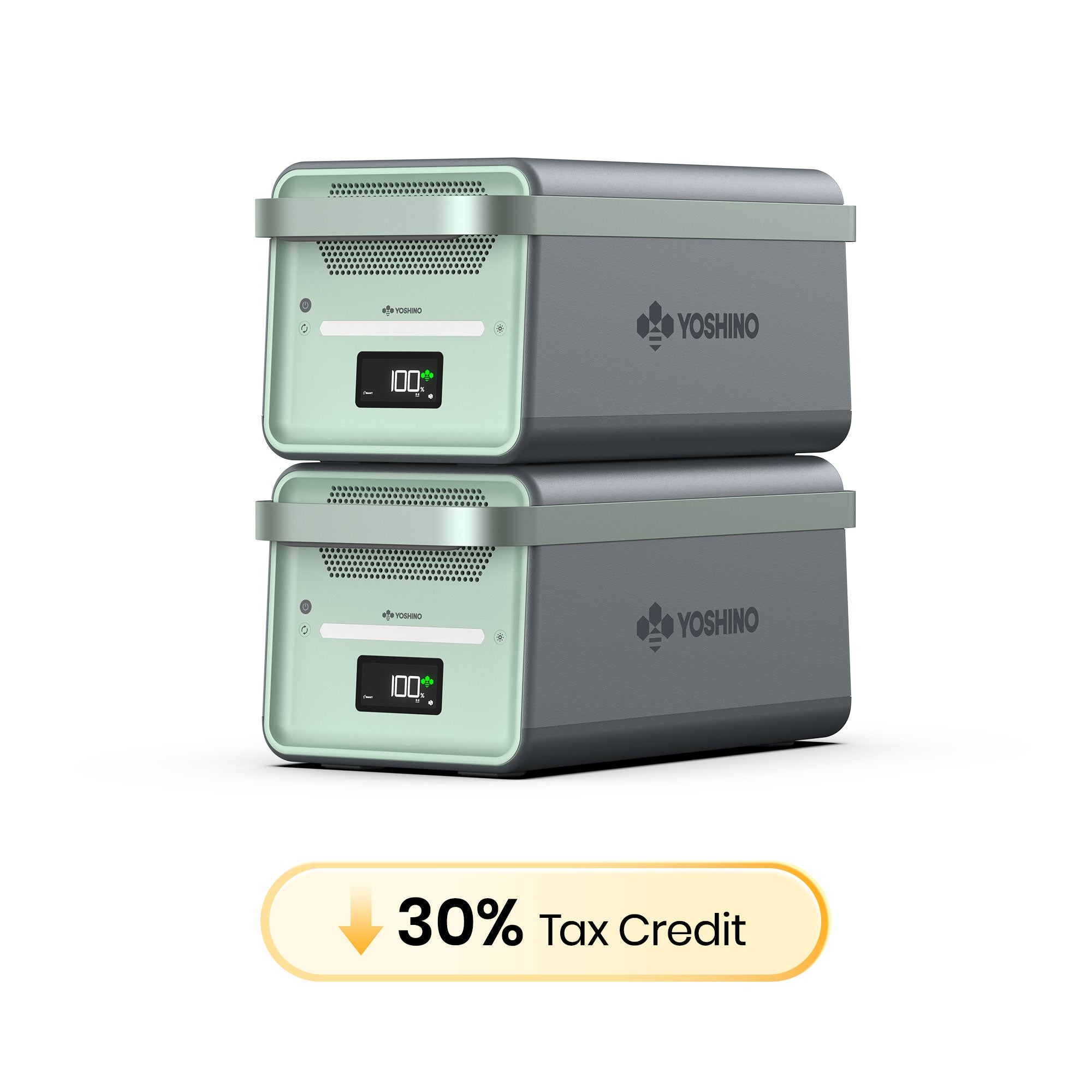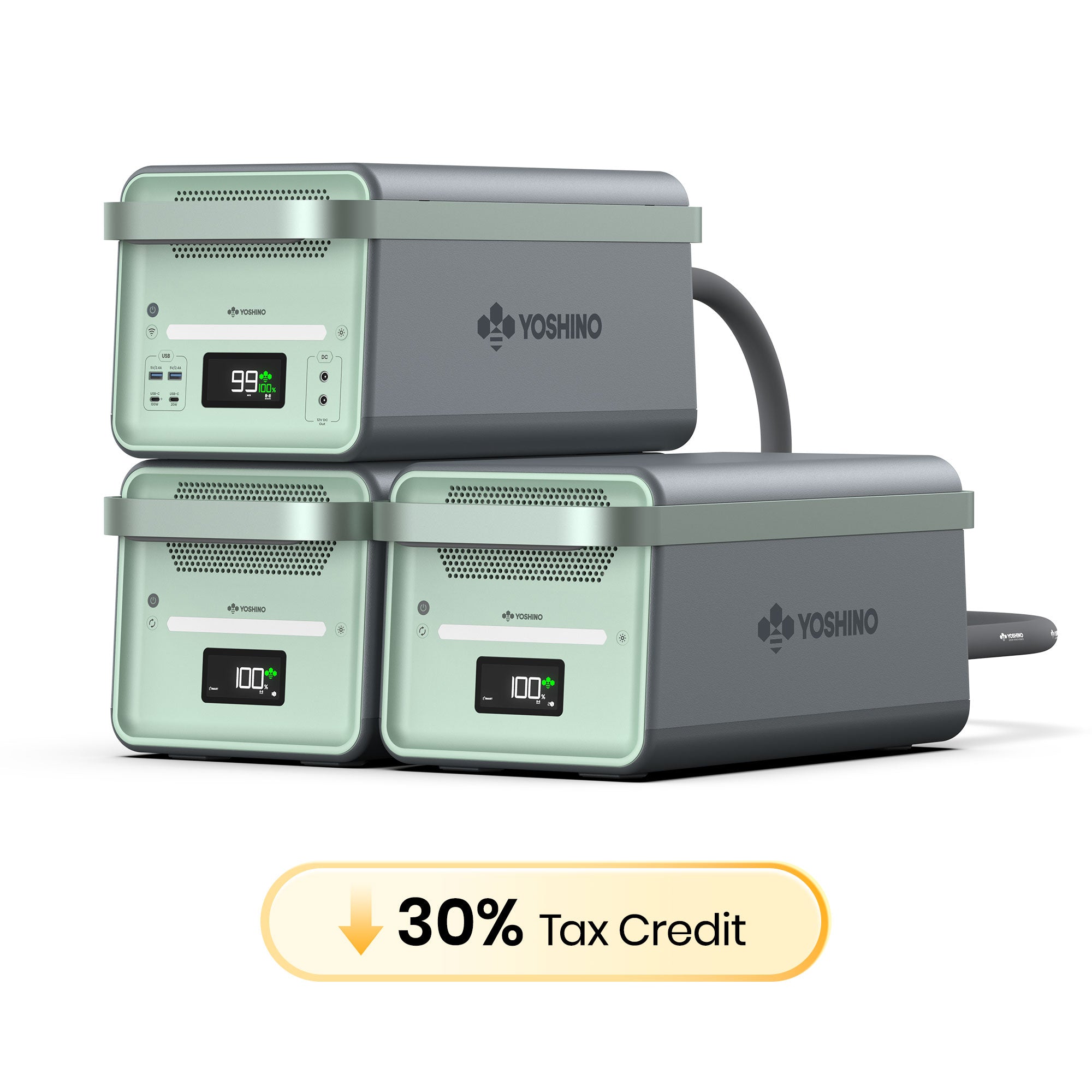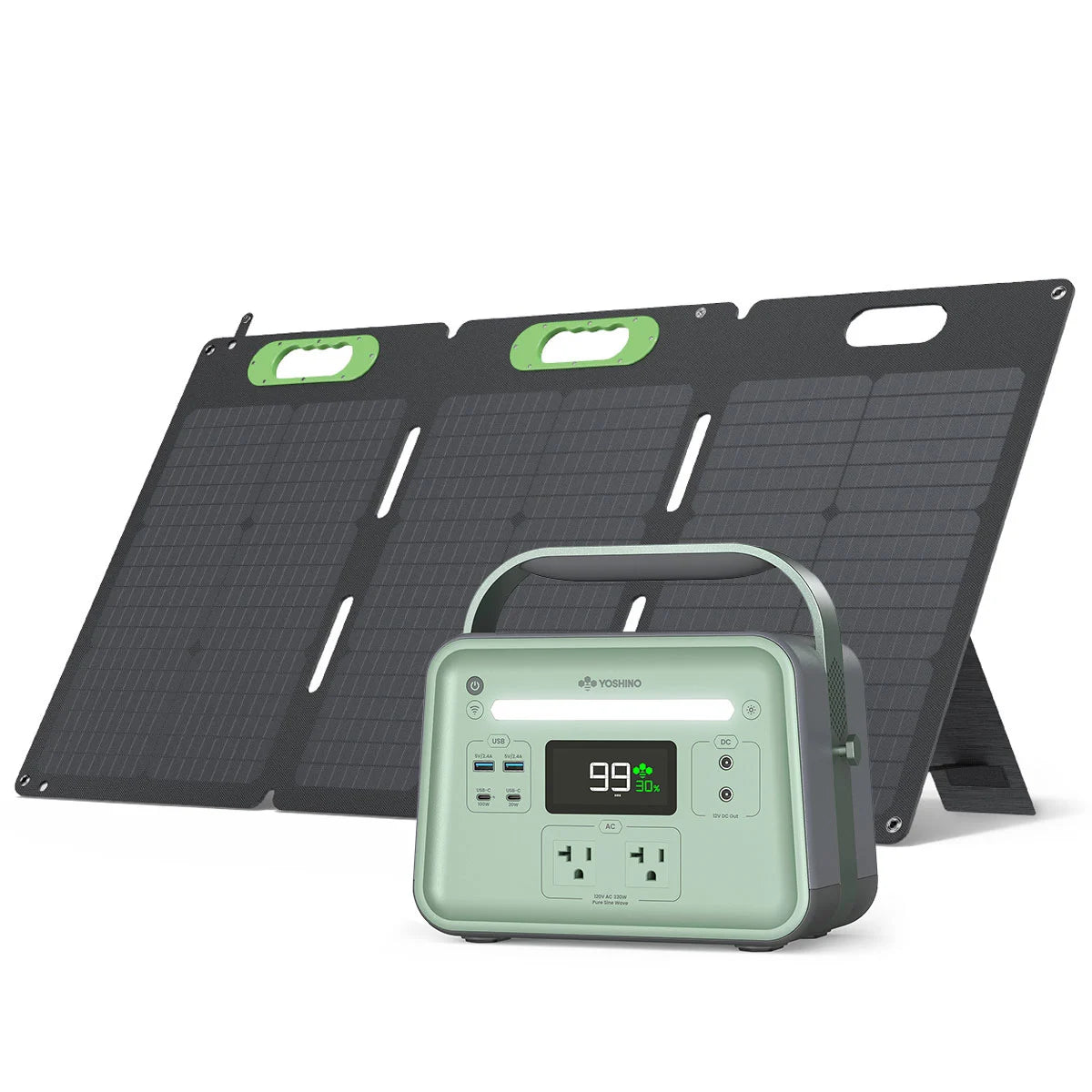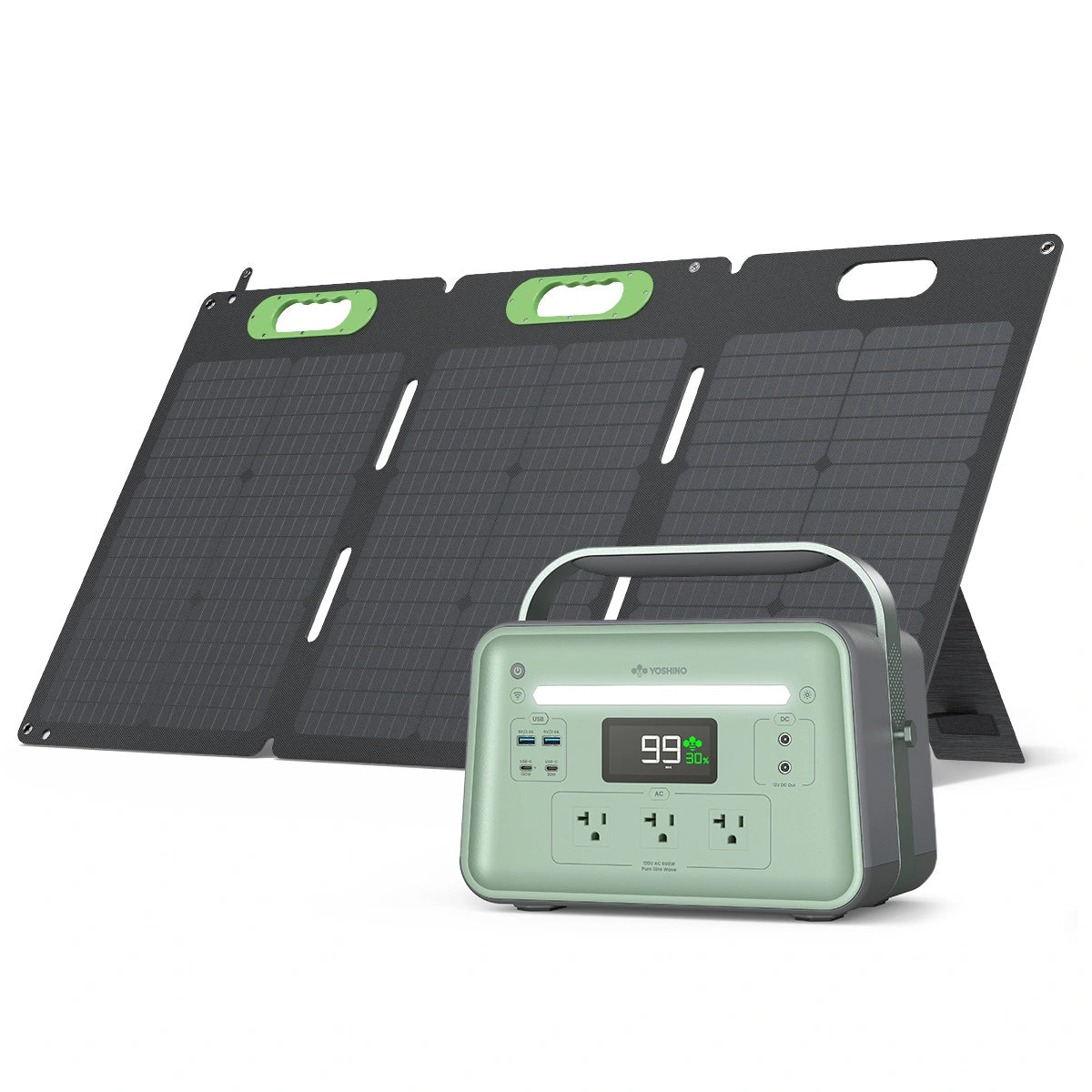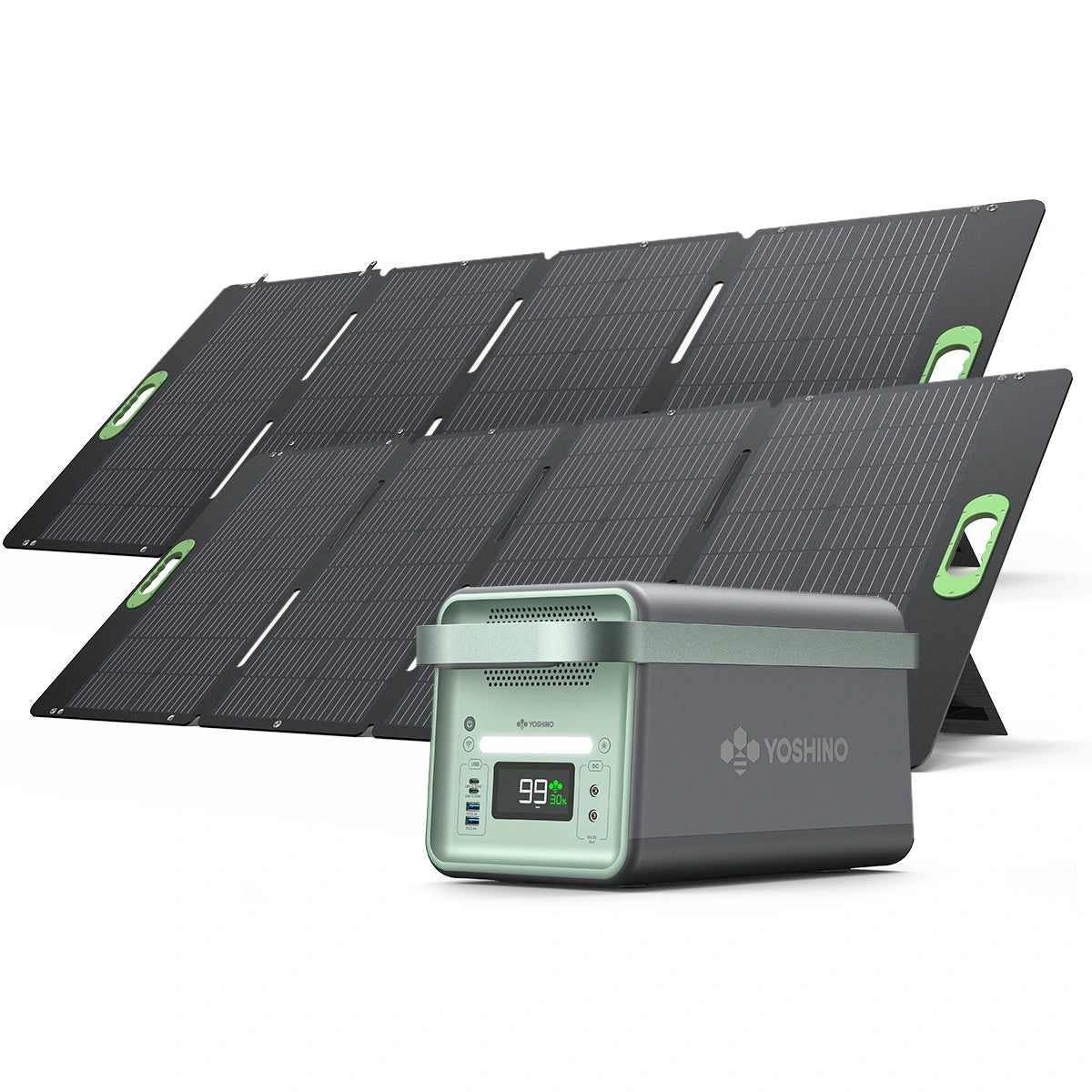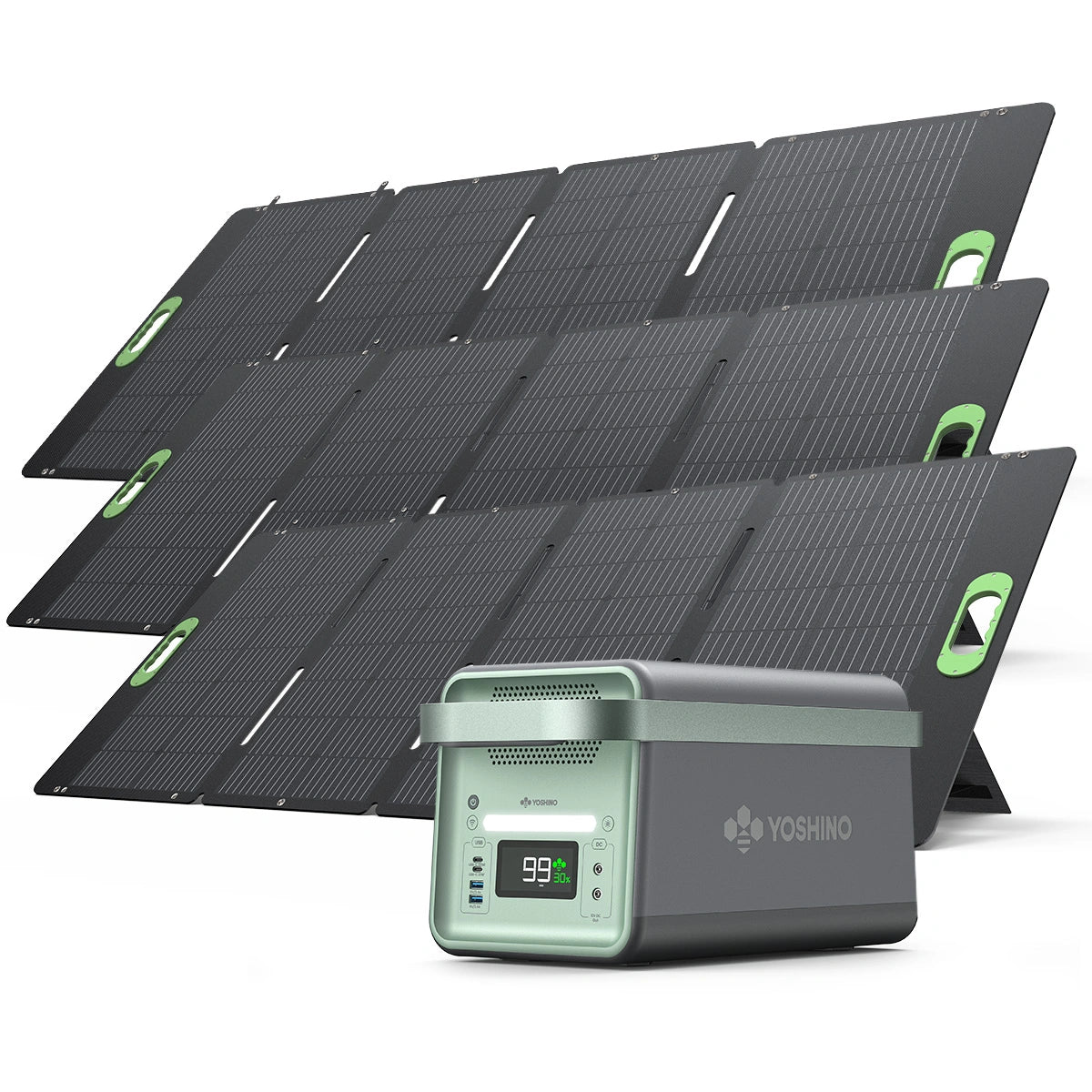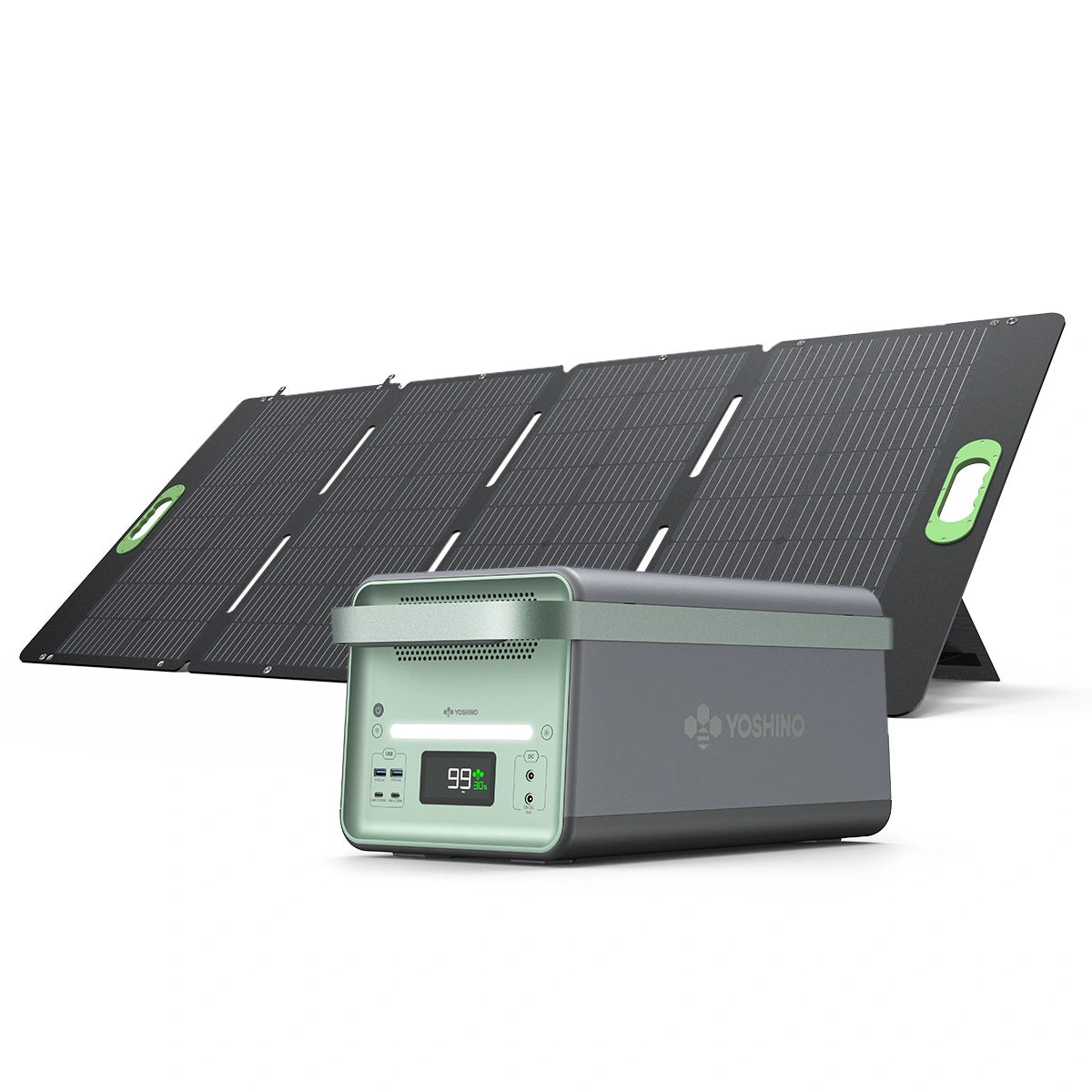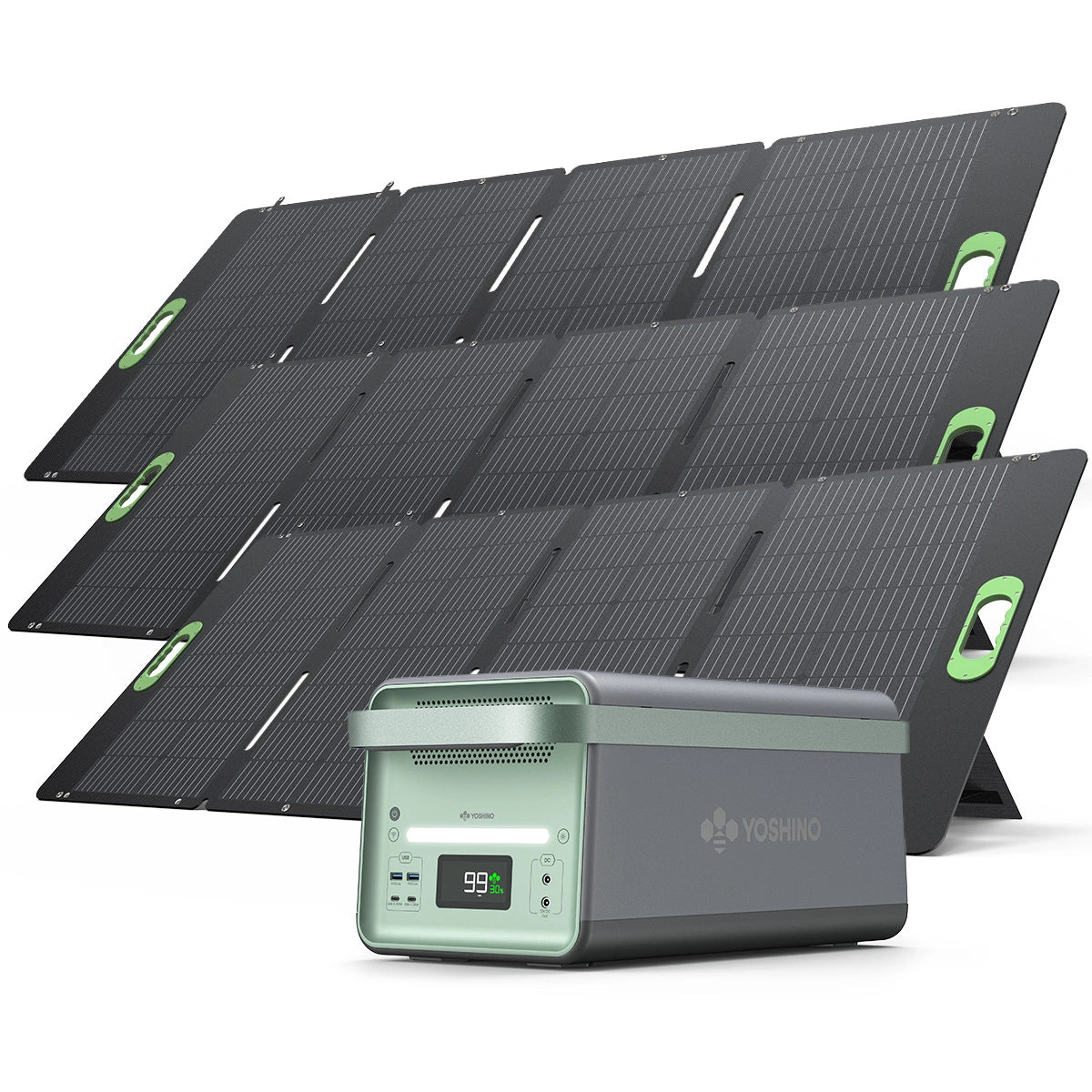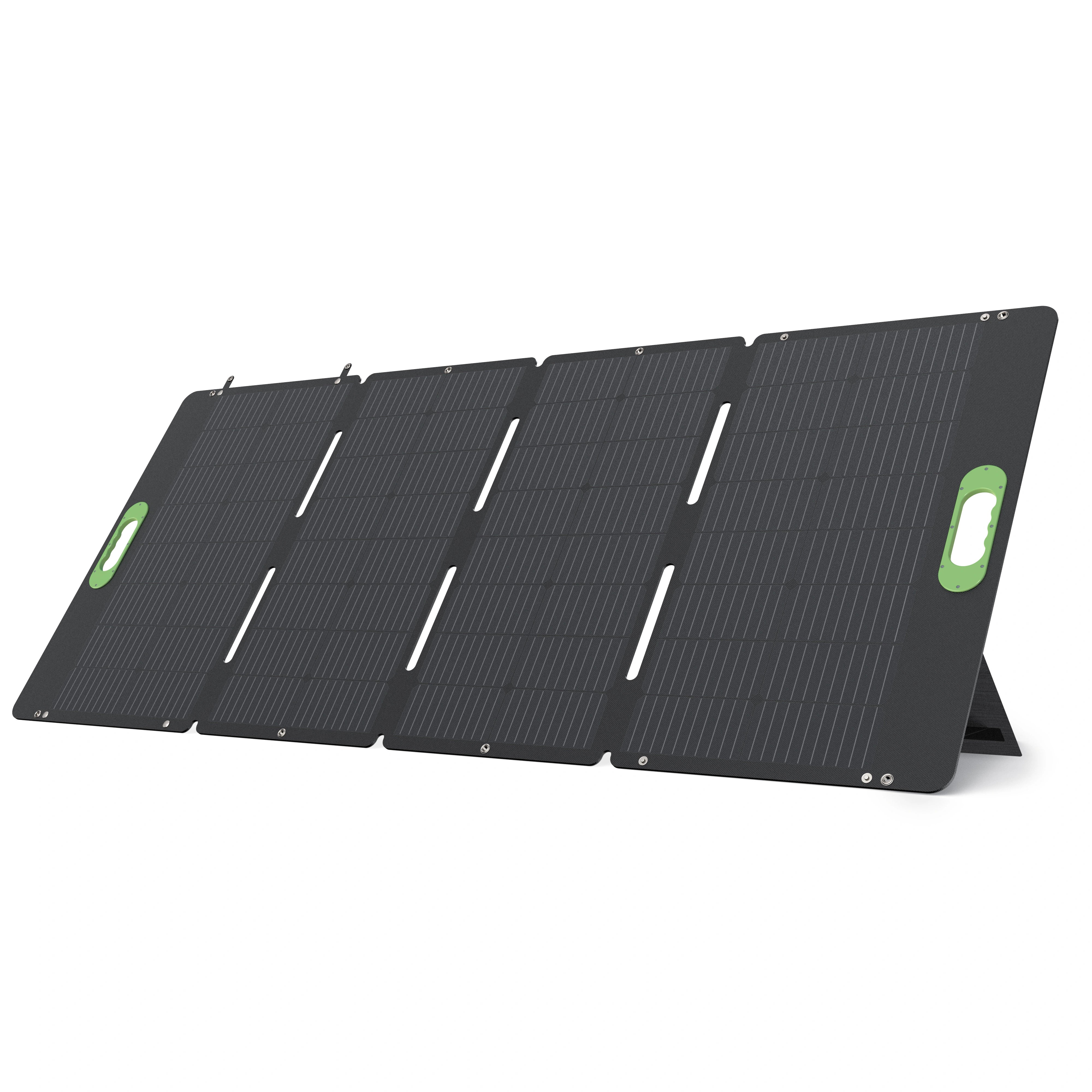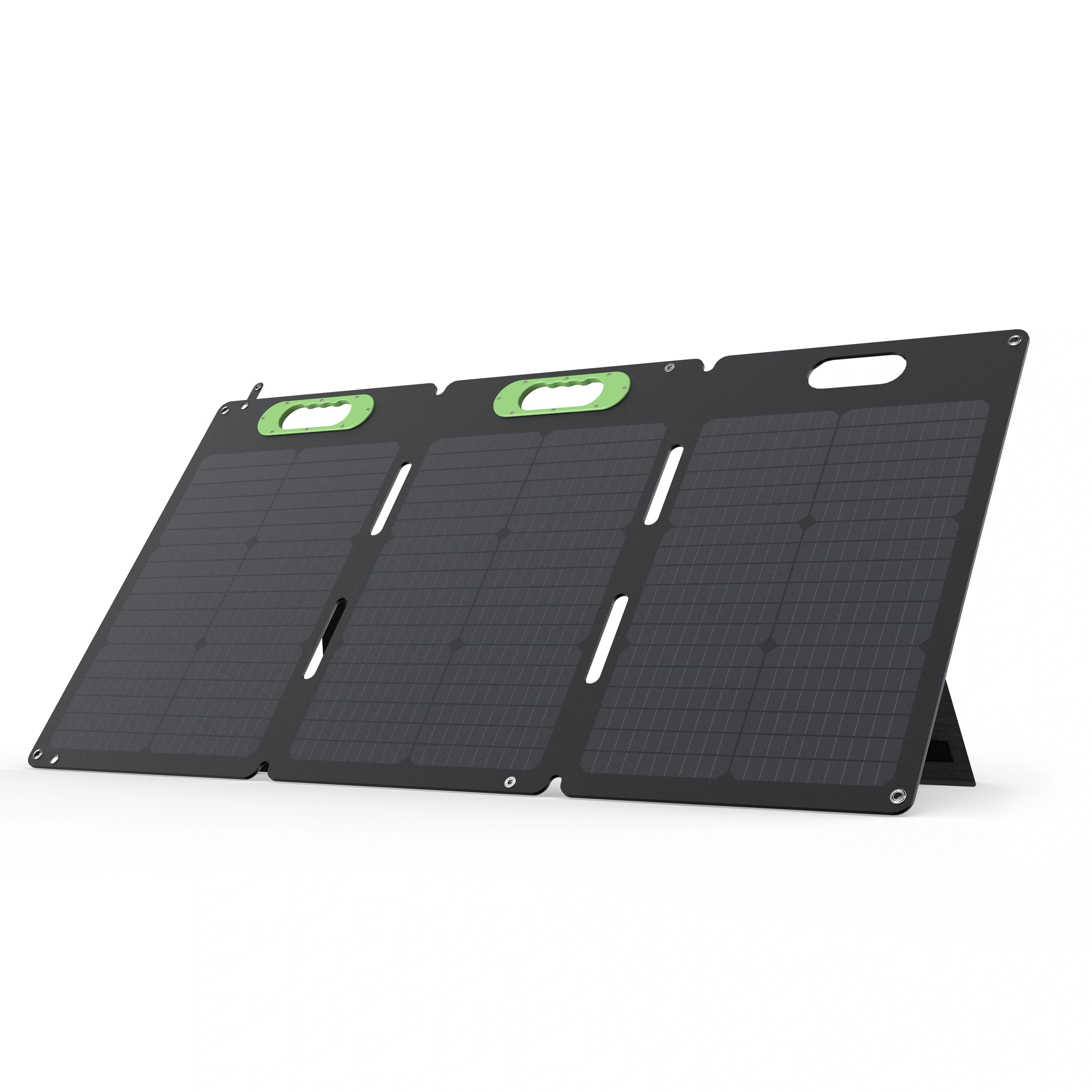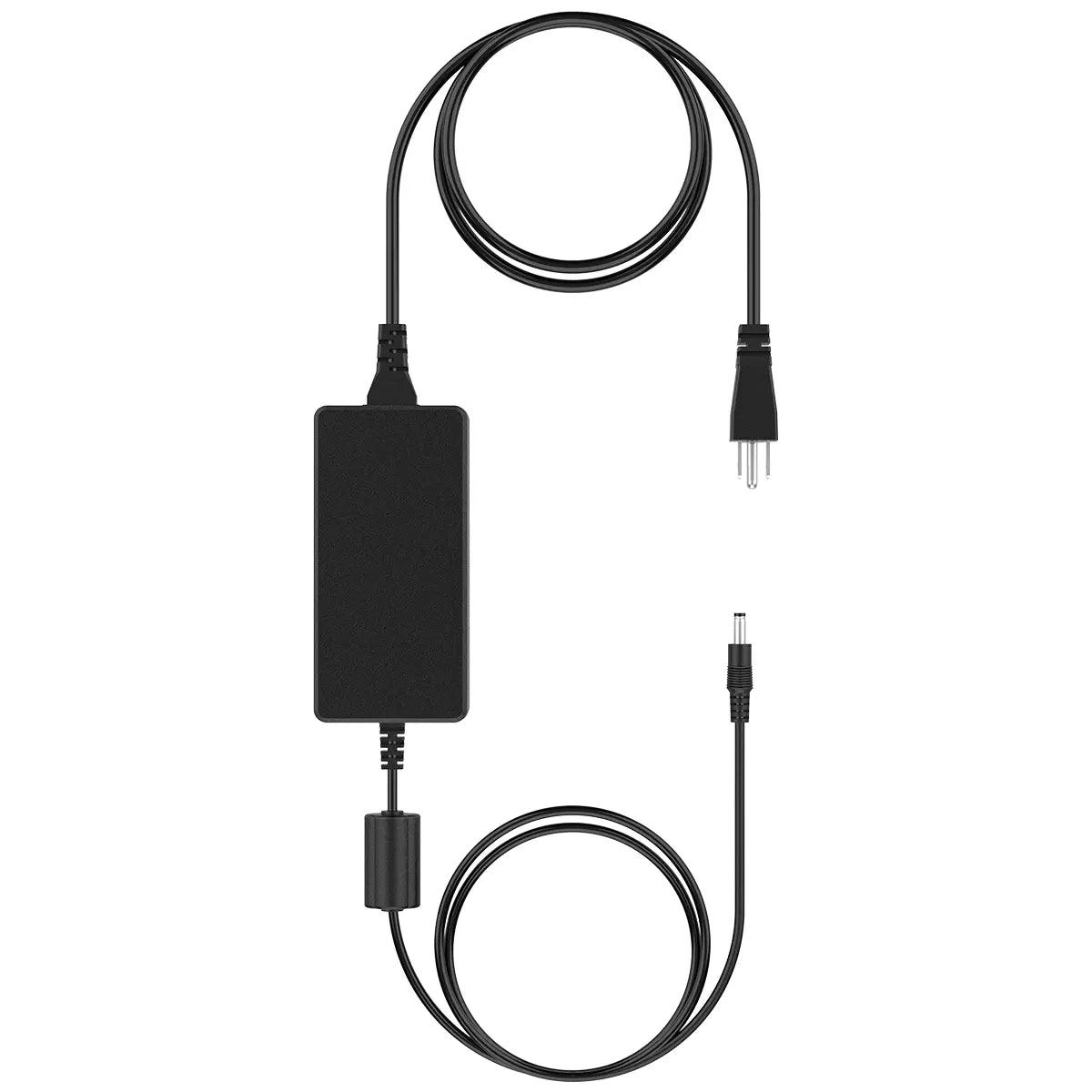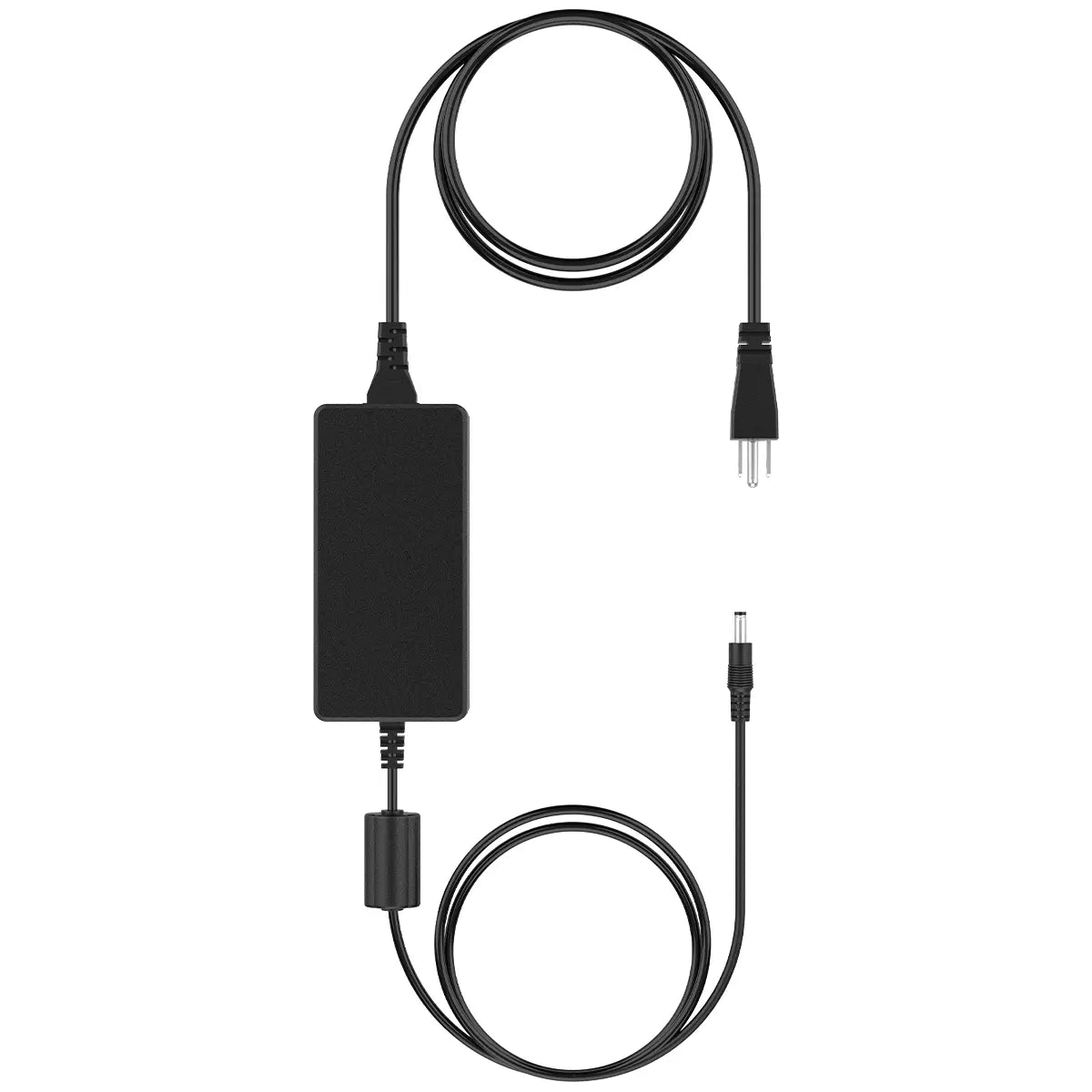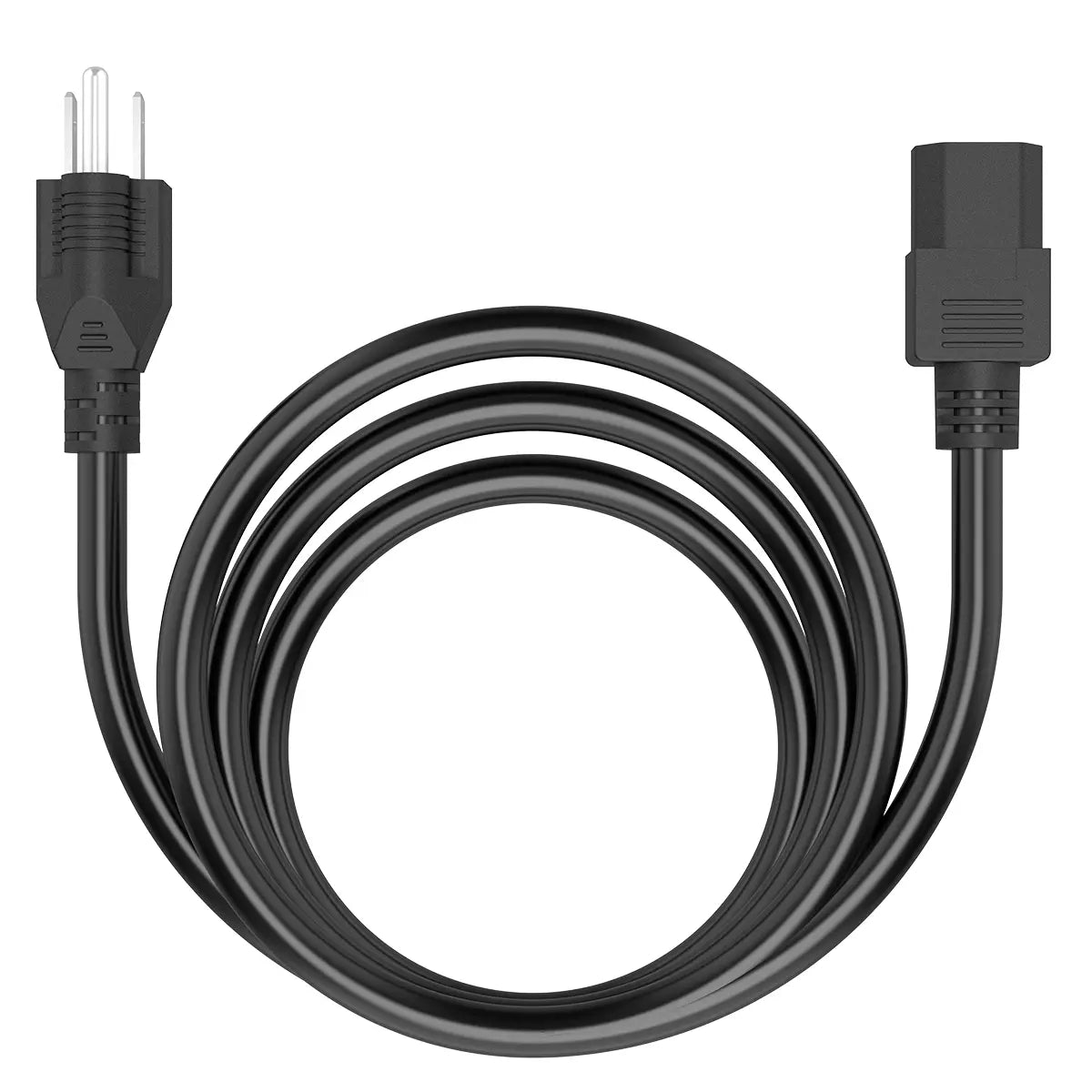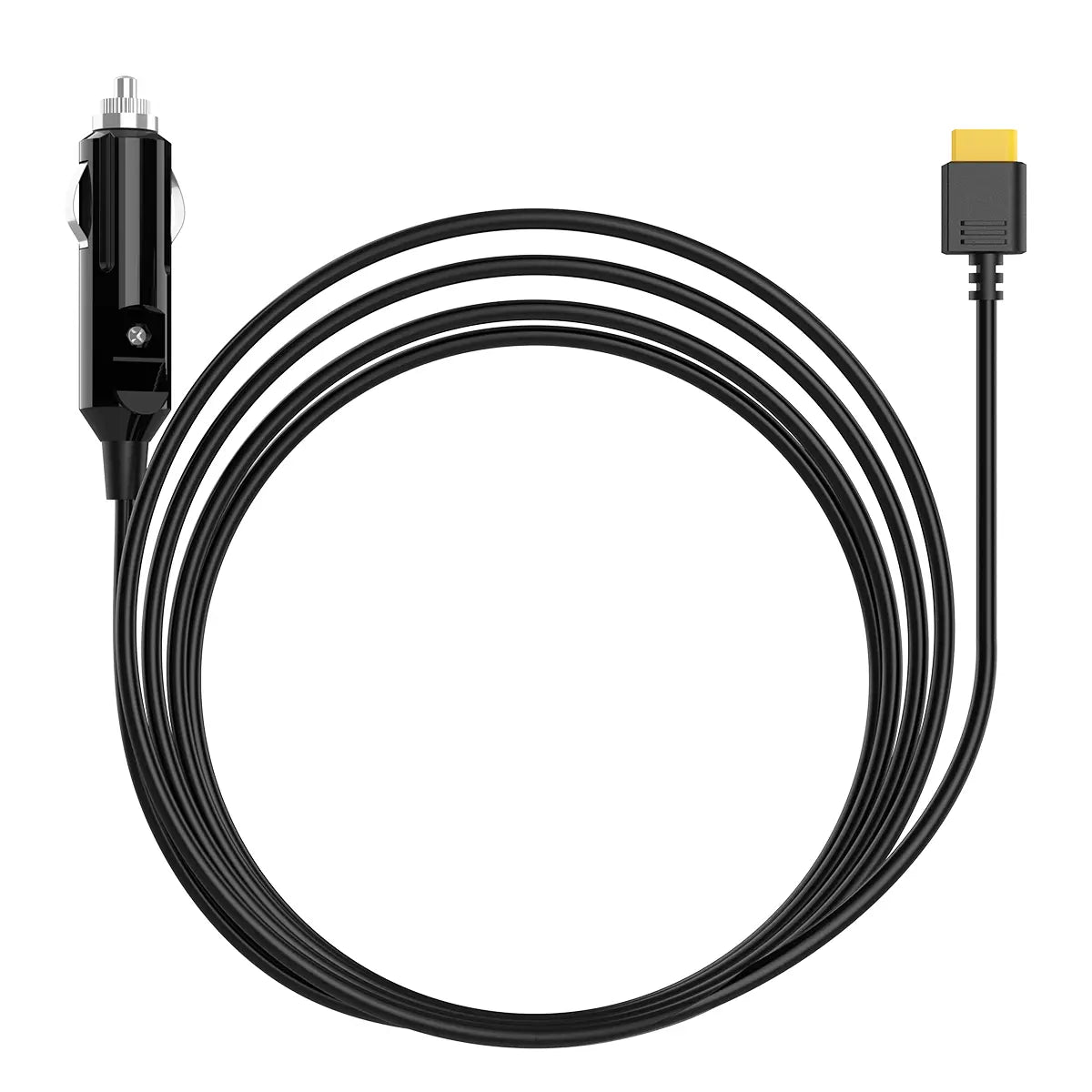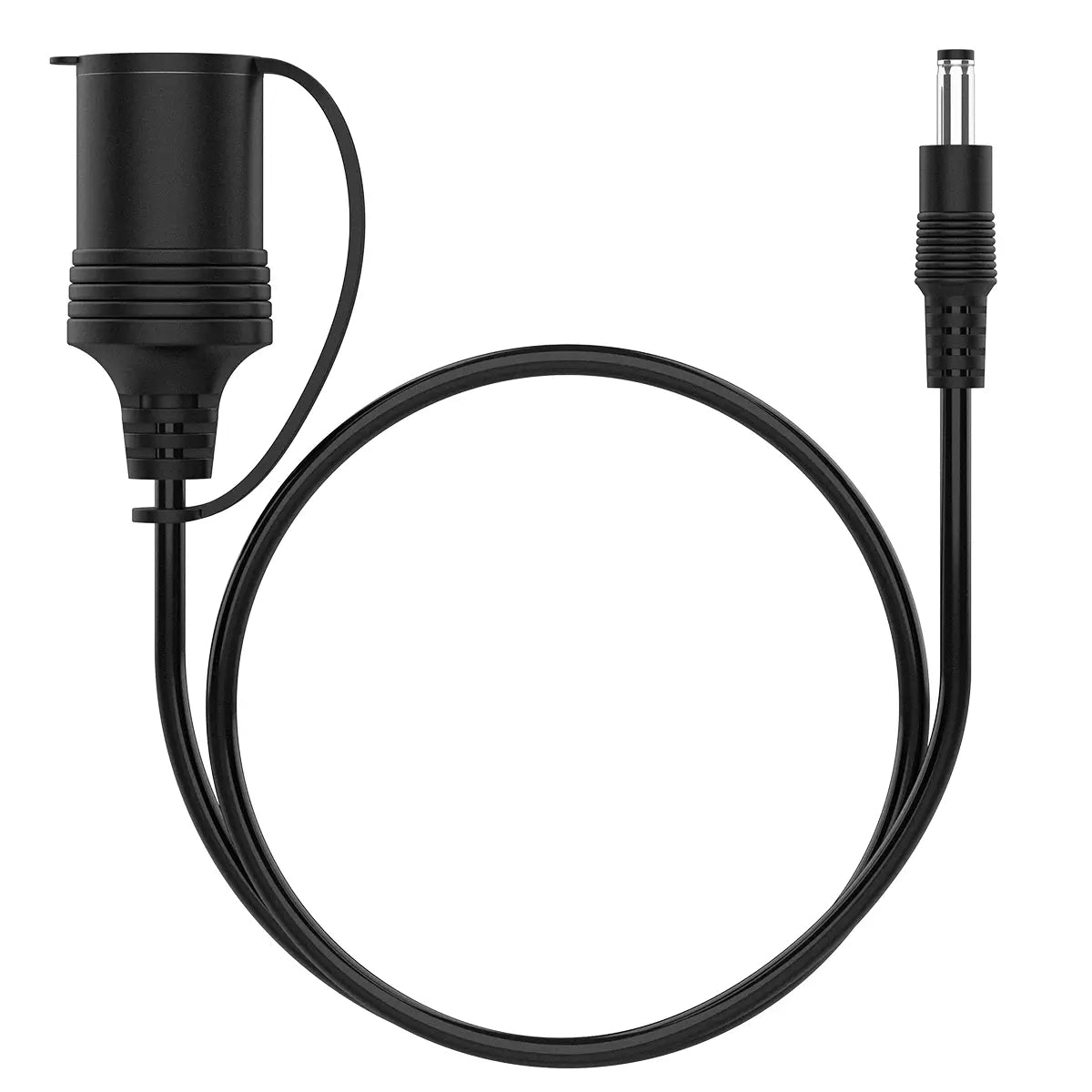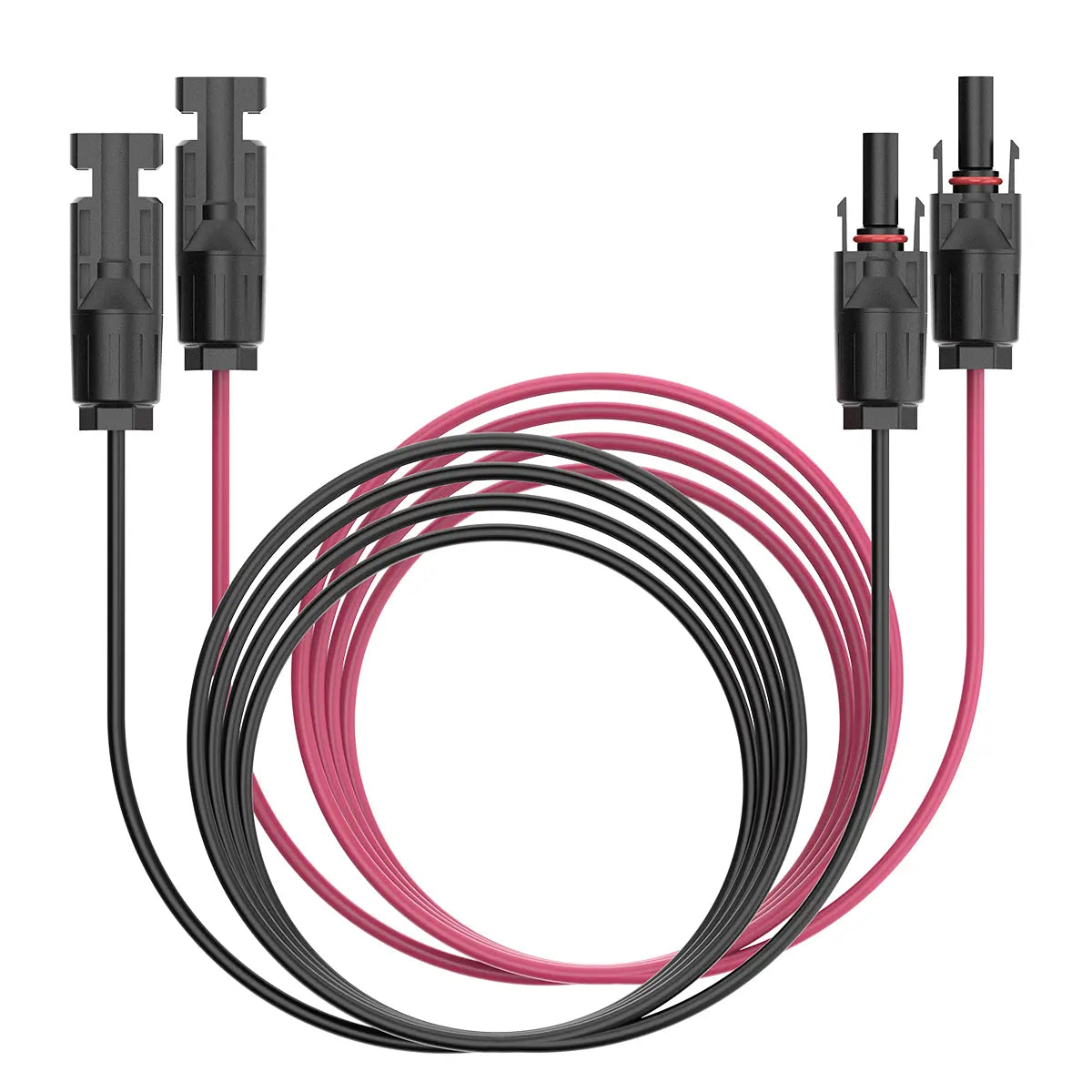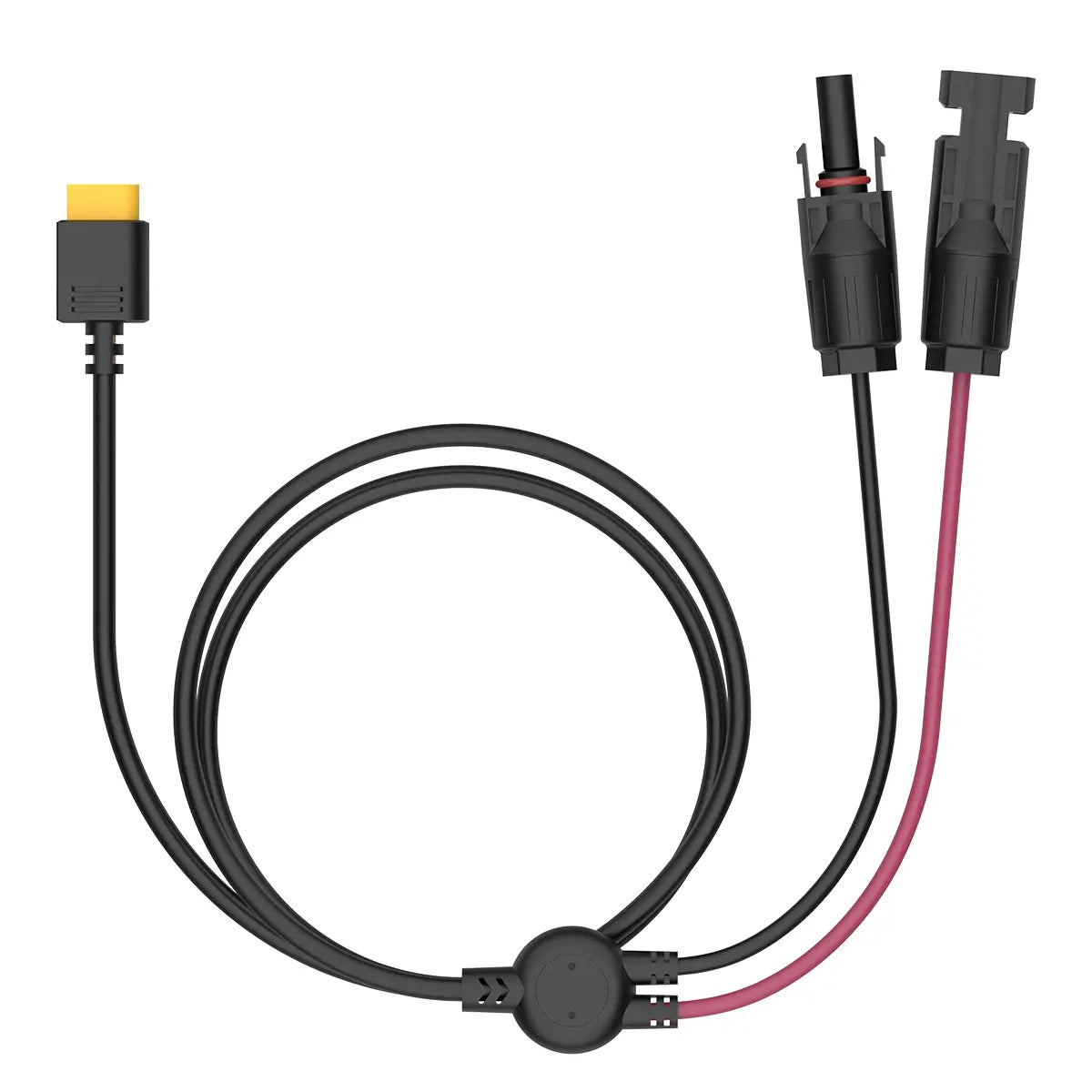Outdoor Adventures
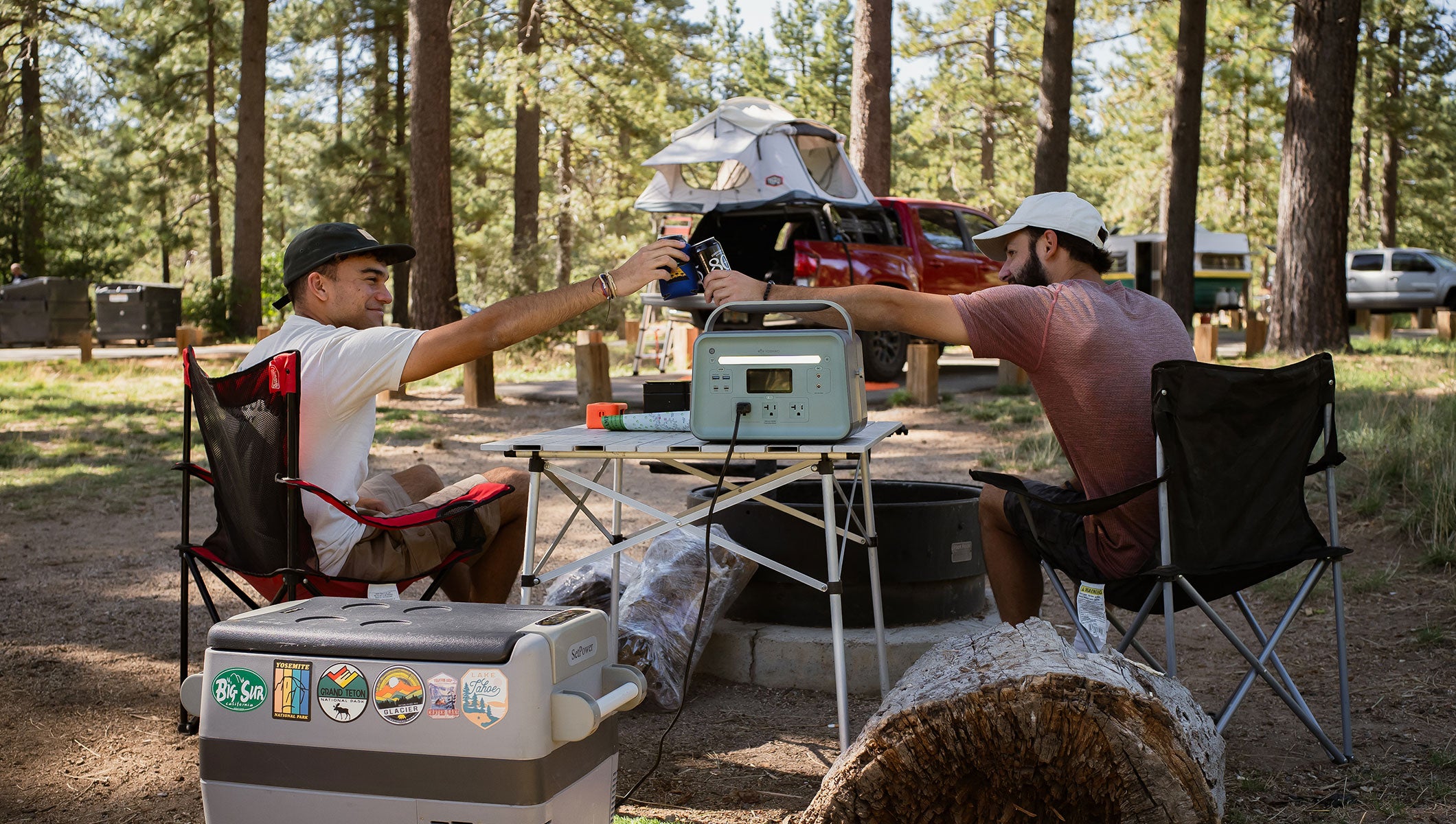
Home Backup
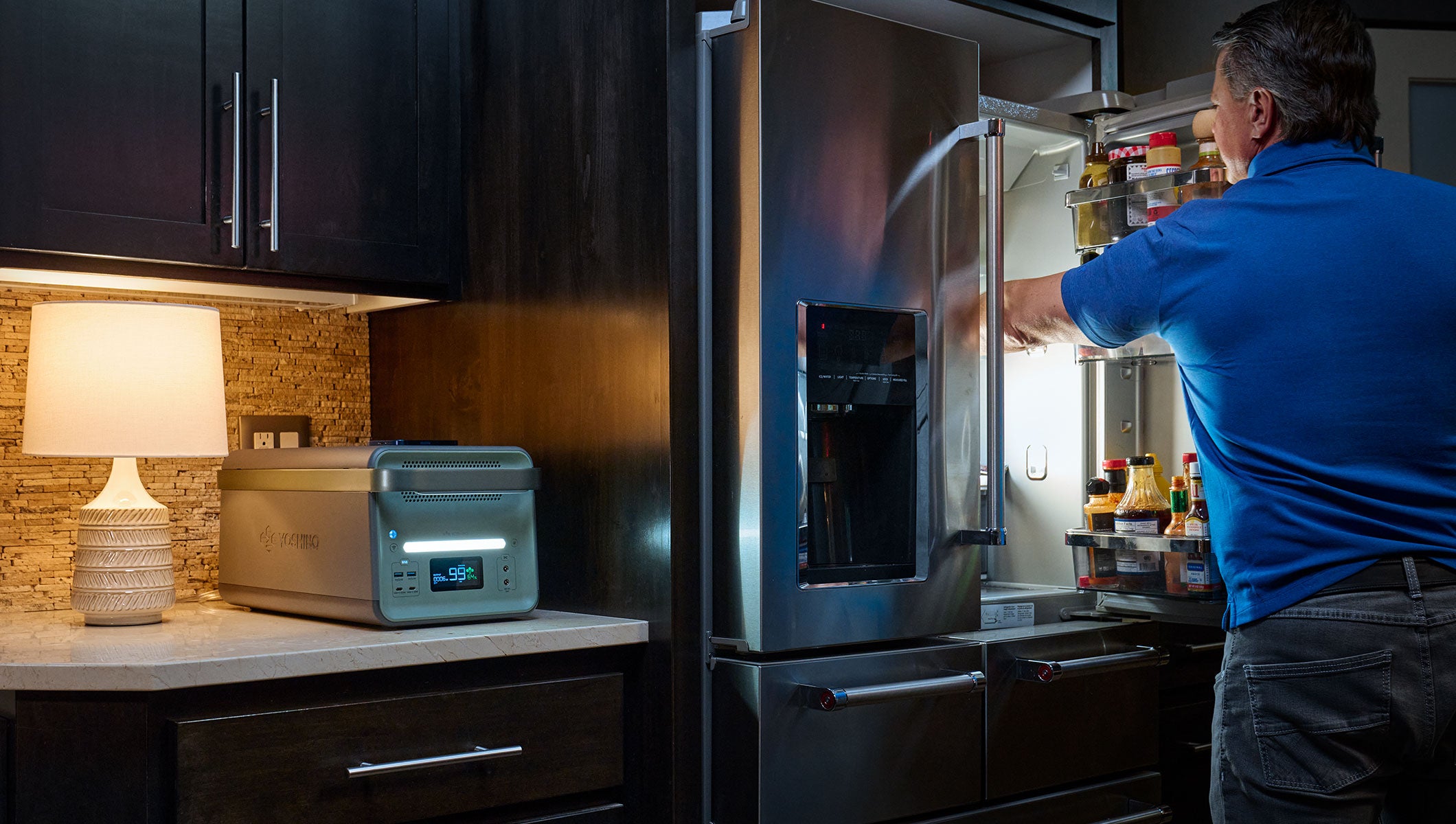
Blogs and Inspiration
Imagine this: You’re in the middle of movie night with your family, popcorn in hand, when bam! The power goes out. Everything’s pitch black, and you realize just how much you rely on electricity. If only you had a portable power station ready to go, right? Whether it’s an emergency power outage, a blackout, or simply the need to keep your devices charged when traditional power sources are down, having a reliable battery backup can be a lifesaver (and a movie night-saver, too).
So, why should you read this article? Because a power outage can hit your house at any time, and being prepared with a backup power solution is essential. We’ll dive into everything you need to know about choosing the best portable power station, different charging options, and how much power you’ll need to keep your home running smoothly when the lights go out. By the end, you’ll know how to pick the perfect emergency power station for peace of mind and uninterrupted power.
Why Should You Consider a Portable Power Station for Emergencies?
Portable power stations are modern-day heroes during a power outage. These versatile devices provide battery backup when the power goes out, keeping your essential devices like phones, laptops, and small appliances running. Portable power stations can keep your home operational even when everything else is down, providing reliable power until the situation is restored.
Innovative Solid-State Technology: The Future of Backup Power
Yoshino’s solid-state technology marks a significant advancement in energy storage and backup power solutions. Unlike traditional lithium-ion batteries, which rely on liquid electrolytes, solid-state batteries use a solid electrolyte, drastically reducing risks like overheating, leaks, and fire. This innovation not only enhances safety but also boosts energy efficiency, providing more power in a smaller, lighter package.
One of the key benefits of Yoshino’s solid-state batteries is their energy density. With up to 2.5 times the energy density of conventional lithium-ion batteries, these batteries store more power while maintaining a compact form. This means you can rely on your backup power system for longer periods without the need for frequent recharges. Whether for a short-term emergency or keeping essential devices powered during extended outages, Yoshino’s solid-state technology ensures you have the reliability you need.
Additionally, Yoshino’s solid-state power stations are designed for durability, making them ideal for both indoor and outdoor use. They’re a game-changer for those seeking a more eco-friendly solution—offering quiet, clean, and emission-free power that won’t disrupt your environment.
As more consumers shift to sustainable energy solutions, Yoshino is leading the way, providing safe, high-performance, and long-lasting energy storage solutions to power homes during emergencies. With Yoshino’s solid-state technology, you’re not just investing in backup power; you’re embracing the future of energy.
What’s the Benefit of a Battery Backup at Home?
A battery backup power station is crucial for maintaining your home power during an outage. Unlike a traditional generator, which requires gas, a portable power station can recharge through various options, including solar power. Some models, like the B4000 SST and B2000 SST, even allow you to power a wide range of devices without relying on traditional power sources, offering a clean, quiet power supply for your home.
How Much Power Do You Really Need?

When choosing a portable power station, one of the first things to consider is how much power you’ll need. Portable power stations come in different sizes and power outputs, measured in watt-hours. This measurement helps determine how many devices you can run and for how long. For example, a high-watt-hour power station can keep essential appliances, like your refrigerator or portable air conditioner, running during a blackout.
Consider the following factors when determining your power needs:
- Home appliances: Do you need to power your entire home or just keep a few devices running?
- Size of the battery: Larger batteries offer more watt-hours, meaning they can keep devices charged longer.
- Essential devices: Think about what’s most important to keep powered up—phones, lights, and perhaps a small fan.
What Are Solar Generators, and How Do They Work?
A solar generator is essentially a portable power station that can be recharged using solar power. Solar panels collect free energy from the sun, which can then be stored in your portable battery for later use. This setup is ideal for eco-friendly backup power since you’re using clean, renewable energy. A solar generator system, like the Yoshino B2000 Power Station with solar panels, lets you have a reliable backup power source without depending on the grid.
Advantages of using solar generators:
- They provide uninterrupted power during prolonged outages, as long as there’s sunlight.
- Solar generators are quiet and emission-free, making them great for both outdoor adventures and home use.
- Some models allow fast charging, so you won’t wait too long for a full charge.

Are Portable Power Stations Reliable Backup Power Solutions?
When you think of a “backup solution,” reliability is key. Portable power stations are designed to be dependable, even during emergencies. Many models come with safety features to protect against overcharging, and some even include an AC outlet for powering larger devices. A reliable backup power source, such as a home battery, can make all the difference between managing an outage smoothly and scrambling to keep things running.
What’s the Best Portable Power Station for Home Use?
Finding the best portable power station for your home is going to be all about your personal power needs. Here are a few top-rated options:
- B4000 SST: This power station is well known for its high capacity, allowing it to power a wide range of devices, including essential appliances.
- B2000 SST: With a user-friendly design and compatibility with solar panels, it’s an excellent choice for solar power enthusiasts.
When you’re trying to choose the right station, consider your home’s power needs, the size of the battery, and charging options including using solar panels or AC outlets.
Why Is Emergency Preparedness Important?
Being prepared for an emergency means that you have a good plan and the right tools to face unexpected situations, like a power outage. A portable power generator provides peace of mind, knowing that you can keep your devices charged, your essential appliances running, and your family safe when the power goes out. With a portable power station like the B330 SST, you’ll be ready to handle emergencies with ease.

What Charging Options Are Available?
Portable power stations offer multiple ways to recharge, from traditional AC outlets to car chargers and, of course, solar panels. Having different charging options is great because it lets you power your station without relying on just one source. For instance, if you’re in an area with little sunlight and can’t charge up with solar panels, you can recharge using a car charger or AC outlet.
Popular charging options include:
- AC Outlet: For fast charging at home.
- Solar Panel: Eco-friendly and perfect for long-term power supply during an extended outage.
- Car Charger: Useful when you’re on the go or without access to a power outlet.
Can Portable Power Stations Keep Your Whole Home Powered?
While portable power stations are fantastic for keeping devices like phones and lights running, powering your entire home might require a larger, whole-home backup power setup. Whole-home backup power solutions involve integrating a larger battery backup system with your home’s circuits, ensuring uninterrupted power throughout. However, for smaller, essential devices, a portable power station can give you enough power to get by during an outage.
Are Portable Batteries Suitable for All Energy Needs?
A portable battery works well for keeping smaller devices like power tools or cell phones running and handling basic home circuits, but it may not provide enough power to keep large home appliances running for long. To address a full home backup power need, a larger system is required, but a portable battery can still keep your devices running in a pinch.
When you need reliable backup power to keep your devices running during a blackout, a camping trip, or any time you need emergency power, be sure to contact us here at Yoshino for the top power options in the industry. Whether you’re an individual who wants a good power option, or you’re a dealer who wants to partner with us, we’re here to help you stay charged up and ready to go!

Tips for Using a Portable Power Station
Using a portable power station is a fairly easy thing to do, but you may want to keep a few things in mind to make the most of your backup solution:
- Plan your energy usage: Be sure to check and see what kind of power you essential devices need so you can make sure they can stay powered up.
- Monitor the power output: Check how much power each device needs so that you can avoid draining the battery too quickly. Some devices will need a smaller power station while you may need a larger power source for your home.
- Choose the right size: Select a portable power station that meets your power needs. Check the labels on your devices to see what wattage you need to keep them powered.
Things to Remember About Portable Power Stations
When you need a good portable power station, be sure to keep these things in mind:
- Portable power stations are important for emergency preparedness and keeping your home running during a power outage.
- Battery backup provides uninterrupted power for your essential devices, thus giving you peace of mind.
- Solar generators are eco-friendly options for recharging during an extended outage. Solar is a great option for power, especially if you live in a sunny area or one that has little or no obstruction from trees.
- Reliable backup power source: A good portable power station can help to make sure your electrical devices are all powered up when the electrical grid is down.
- Choose a portable power station with multiple charging options, like AC, solar, and car chargers.
- Think about your power needs to pick the best portable power station for your home. Keep in mind what appliances and devices you’ll need to power so you can make sure you get a power station that will work best.
- Whole-home backup power solutions may be necessary for complete home power but keep in mind that these will require a bigger setup.
With the right portable power station, you’ll have a reliable power supply to keep you comfortable and connected, even if the lights go out unexpectedly.
It’s a terrible feeling to face a lengthy electrical outage and have no way to power up your home appliances and other devices. Having access to a good generator can save the day. This is especially true if you’re in the midst of a natural disaster like a hurricane or tornado and lose all electricity at your home. Nothing beats having a reliable way to prevent food from spoiling or ensuring you’re able to heat or cool your home and keep your family safe.
During an electrical emergency, you might wonder if a 4000-watt power supply will provide enough power to run the major appliances that you rely on daily. The short answer is yes! A generator like the B4000 is a versatile generator that can be used indoors, outdoors, or even taken on the road for camping trips or emergencies. A 4000-watt generator can handle many jobs at one time. Let’s dive into some information that we hope will help you with understanding the capabilities of a 4000-watt generator and how effective it can be at powering up the devices and appliances if the electricity goes out at your house.
What Can It Run?
The first thing that most people want to know when they’re thinking about buying a new power station is, how much power does it have, and how many appliances will it power up? A 4000-watt station is strong enough to provide backup power for the items you need most. This includes refrigerators, microwaves, kitchen appliances, and even power tools that you may need if making repairs after a storm. Something to keep in mind is that you have to make sure you don’t overload your power supply by trying to connect too many devices at one time. You also need to understand the starting and running watts for the appliances and devices you want to run. Starting watts is the surge of power that an appliance needs when it’s first turned on.
Most of your household appliances will have a label on them that tells you what the running wattage requirements are. That’s great, but you also need to understand that the power required will have a higher wattage when you first start them up. For instance, a standard-size refrigerator will use around 600 running watts, but it could need up to 1200 starting watts. If you have a 4000-watt power station, you’ll be happy to know that it will run a refrigerator as long as you don’t have it overloaded with too many other devices. You need to be careful and take into consideration the maximum power allotted for the station you have.
Can a 4000-Watt Power Station Run Multiple Appliances Simultaneously?

Facing a power blackout can be a trying time. Not only will you have to face sitting around a dark house, but depending on the weather, you could find yourself facing extreme heat, or freezing temperatures. You’ll also have to worry about the food in your refrigerator or freezer if the power is expected to be out for a long while. In a situation like this, many people want to know if their 4000-watt power supply will be able to handle running multiple appliances all at the same time.
If this is something you’re wondering about, you’ll be happy to know that yes, the B4000 power station provides the power that is needed to run multiple appliances at one time. The B4000 can run most household appliances including a fridge with a freezer, microwave, a few lights, and even a couple of phone chargers at the same time. It can also be used for camping appliances and for extra power in a garage or on a construction site where you may need a power station for tools. This of course will depend on the combined power requirements of each appliance or device that needs to be powered. To get a better idea of what it takes to power things up, here are the usual wattage requirements for some of the more common appliances:
- Refrigerator: 600-1200 watts
- Microwave: 800-1200 watts
- Window air conditioner: 1000-1500 watts
- Power tools: 800-1200 watts
- Space heaters: 1500 watts
Remember, the best way to maximize the overall use of your 4000 Watt Power Station is knowing what the total wattage is for each appliance you’ll need it for and making sure you don’t exceed the power limit. In general, having a power station is great for emergency backup power in your home.
Can Yoshino’s B4000 Run a Central Air Conditioner?

Sitting in a stifling hot home or a home that is freezing inside when the power is knocked out can not only be uncomfortable, it can also be dangerous. This is especially true for those who are elderly or have small children and need to make sure their homes are at the proper temperature. Your home should be at the right temperature for comfort as well as for health and safety reasons. Can a power station like the one we’ve been discussing power a central air conditioner that needs at least 3000 to 6000 watts to operate? Unfortunately, a 4000-watt generator will most likely not be strong enough to run a large central air conditioning unit. It can, however, handle a small window ac unit.
Having access to a working window A/C can mean the difference between surviving comfortable without power and overheating in your home.
Can a 4000-Watt Generator Run an RV?
Do you have an RV that you’re planning to take out for a road trip soon? If so, you’re going to need a good power station to power up everything while you’re on the road. A 4000-watt power station is a good size to take in an RV. It has an ample power supply to run essential appliances like the refrigerator, microwave, and lights. It can also be used to charge the RV’s battery. All you need to do is plug it directly into the generator using the RV's power cable to connect it.
Most RVs have power requirements between 2000 and 3000 watts for basic usage, so a 4000-watt station offers some flexibility for running multiple devices at once. However, it's important that you calculate the wattage of your RV appliances, so you won’t overload the device. Whether you just need to run a small radio or television in the RV, or you need it for everything that has power, choosing the right power station can make your vacation a success.
Can This Device Run Power Tools in an Emergency?
If you're using a power station for work (such as on a construction site) or in an emergency, you are going to want a reliable and powerful solid-state power station that can handle 4,000 watts. This is a station size that will run most household appliances as well as power tools. These tools typically have high starting watts, but a 4000-watt station can easily handle the surge needed to get them started.
For example, a circular saw might require 1200 running watts and 2400 starting watts, which is within the capabilities of a 4000-watt power station. However, always check the tool’s power requirements to ensure they fit within your station’s output.
How to Maximize Your Power Station’s Efficiency

If you’re planning to use your 4000-watt power station to power things in your home, RV, or camper, you need to take some precautions in order to maximize efficiency. Here are a few quick tips to keep in mind when you need to use a power station.
- Essential Appliances: Prioritizing only powering up the most important appliances and avoiding overloading the station with unnecessary devices is key to making sure your device doesn’t get overworked in a short span of time.
- Energy Efficiency: Whenever possible, buy low-wattage appliances that consume less power.
- Monitor: Keep an eye on the total wattage that’s being used and be sure that you adjust or disconnect devices that are not necessary if you're getting close to capacity.
Should You Consider a Solar Generator?
Most people know about gasoline-powered generators, but if you want to use a device that is environmentally friendly, a solar generator connected to a Power Station is a great option to consider. Solar generators, which run on energy from solar panels, don’t have the same power output as a gasoline-fueled 4000-watt or larger generator will have, but they’re ideal for easily running small appliances, charging batteries and mobile phones, and providing power for lamps and small lights. A solar generator is a great choice to take on a camping trip or to use as a backup power source if your power goes out and will only be out for a short time.
Solar-powered generators are an excellent choice for a home backup power generator. They're quieter than gasoline-powered generators, have no harmful fumes, and they are environmentally friendly to use. If you want to reduce your carbon footprint, a solar generator is a great investment to make.

What Size Power Station Do I Need for My Home?
When you need to decide on the size of a solar generator and power station for your home or RV, the size will depend on the power that’s required by your appliances and other devices. A smaller watt station is sufficient for powering a couple of essential appliances and smaller devices during a power outage.
If you’re going to need to power other appliances including a central air conditioning system or a washing machine or dryer, you may need to consider a larger system. Remember, to determine the size you need, be sure to calculate the running watts of the appliances you need to power. Don’t forget to also calculate the starting watts for each appliance, especially those that are larger and will need more power to start up. A 4000-watt system is a reliable power source that can manage a wide variety of appliances and devices. Whether you need a power system to have on hand for a power outage, a camping trip, or even working on a construction site, this size is ideal for powering things up.
Key Points to Remember:
A Power Station with 4000 or more watts is great for when you need home backup power for your electrical appliances.
- A 4000-watt station offers reliable power for appliances and devices like refrigerators, microwaves, small air conditioners and mobile charging stations.
- Always calculate the wattage of your appliances to avoid overloading. This includes calculating surge watts that happen when you start an appliance up.
- 4000 watts may not be enough power for a central air conditioner, but this can provide the right amount of power for smaller window units.
- Consider a solar generator if you need a quieter, eco-friendly power solution for smaller devices and small, essential appliances including a microwave or toaster oven.
- It’s a good idea to not use appliances simultaneously as it can reduce the overall power as well as the time your station will work.
By following these tips, you can ensure that your 4000-watt power station is both efficient and reliable, keeping your most important appliances powered when you need them most.
Maximize Your Power and Stay Prepared with Yoshino
A 4000-watt power station offers a reliable solution for powering essential appliances during outages, road trips, or on job sites. Whether you're running a refrigerator, microwave, or power tools, a power station like Yoshino's B4000 is versatile enough to handle various needs.
For eco-conscious users, solar-powered options provide an environmentally friendly alternative. Ready to secure your energy needs? Contact Yoshino today to learn more about how our portable power stations can keep you powered when it matters most.

